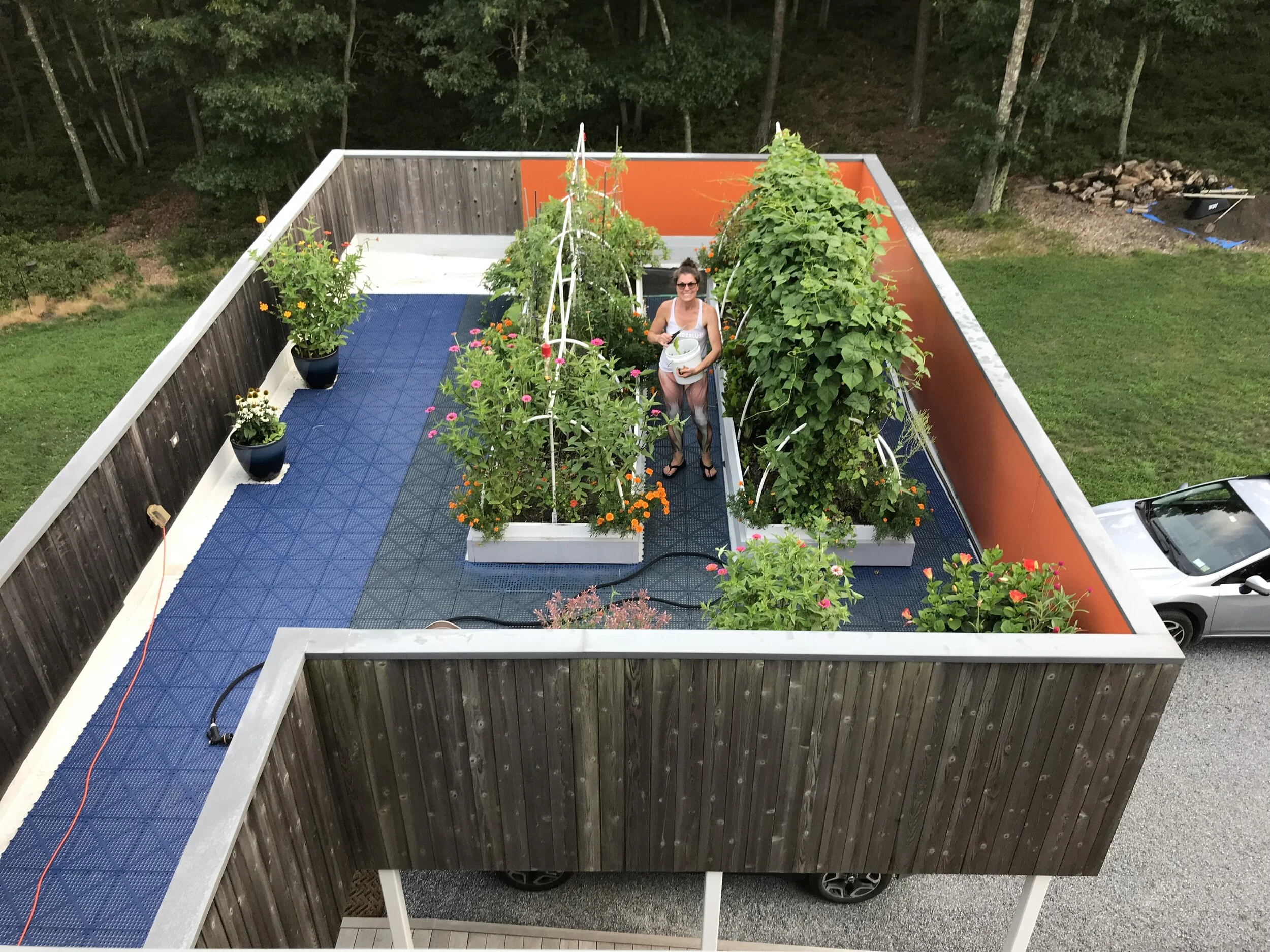Outstanding in the Field: A Traveling Culinary Feast
/I didn't know what to expect when I arrived at the East End Community Organic (EECO) Farm in East Hampton for Outstanding in the Field: a traveling culinary feast that re-connects diners to the land, the origins of their food, and to honor the local farmers and food artisans who cultivate it. Since 1999, this outstanding crew has been hosting farm-to-table dinners for 100-plus locavores at some of the most awe-inspiring locations across the United States and Canada. The crew teams up with farmers and chefs at each location to prepare a five-course feast using local and seasonal ingredients.
I watched Jim Denevan, founder of Outstanding in the Field, carefully place an "Eat Local" sign on the front of the iconic 1953 red and white Flxible bus that the crew travels on to each culinary adventure.
A long dining table that would accommodate 120 guests was situated perpendicular to the bus—spanning east to west—and aligned with two Poplar trees at the east end of the table; this exact location was very reflective of the nave of a church or holy table for what we were about to receive.
Jim Denevan's artistic nature, precision and placement of the table or sign are no surprise, as he is a landscape artist and surfer whose creative sensibilities and balance are immersed in nature. Whether carefully studying the horizon to create a giant raked drawing on a beach or catching the perfect wave, his talents are fleeting to the natural environment. He is a maker of moments and his culinary table installations within the flora and fauna are reminiscent of the Storm King Wall of landscape artist, photographer and sculptor Andy Goldsworthy—who happens to be one of my most favorite artists.
Speaking of favorites, chef Jason Weiner of Almond created the menu for the evening and I became an instant fan when I tasted his stunning corn vichyssoise at the Great Chefs Dinner . His beautiful presentation and delicate balance of flavors reminded me of a summer sunset along the dunes of the South Fork. That dish left such a lasting impression on me that I knew the evenings’ meal was going to be spectacular.
Diners began to arrive at 3 p.m. to sip Channing Daughters 2012 Cuvee Tropical and nibble on hors d'oeuvres of tête de cochon with peach mostarda, smoked bluefish with cucumber, dill and yogurt, chicken liver crostini with pickled onion and oysters with yellow gazpacho.
While guests were on the farm tour, given by Ian Calder-Piedmonte, co-founder and farmer of Balsam Farms and Outreach Director of the EECO Farm, chef Weiner was preparing the most anticipated feast that was locally-sourced from Amber Wave Farm, Balsam Farms, Good Water Farms, Mecox Bay Dairy, Paumanok Vineyards, Pike Farms, Root 'n Roost Farm, Long Island Mushroom Farm, Marilee Foster, Montauk Shellfish Company, and seafood from Montauk CSF, Dock to Dish.
The tour ended at the long dining table that sat amongst the flower and vegetable gardens. Convivial diners grabbed one of the many colorful dishes provided and took a seat for the five-course meal. The weather was sunny and comfortable; Mother Nature would sneak a swirl of wind once and awhile to remind us that fall is gently upon us.
Paumanok Vineyards 2012 Dry Riesling was paired with the first course: tuna crudo with frisée, green zebras tomatoes, sungold tomatoes, red radishes, purple Cherokees, avocado, and garlic croutons. Oh my, the colors in this dish looked like a beautiful bouquet of flowers, very reflective of the blossoms that were all around us. The freshest sushi grade tuna blanketed the beautiful bounty that was just harvested—truly a lovely start.
Channing Daughters 2011 Pinot Grigio was paired with the second course: “Fish-n-Chips” of black sea bass, mahi mahi, fingerling tostones, baby arugula and a five herb rémoulade. Chef Weiner and his crew deep-fried the mahi mahi filets and black sea bass whole. The warm fish and tostones toppled the baby arugula and I could not get enough of the remoulade that brought a brightness to the fried fish—I was in heaven.
Channing Daughters 2011 Tocai Friulano Mudd West Vineyard was paired with the third course: Blue mussels with coriander, saffron, leeks, rouille, grilled bread and smoked tomato. I cannot emphasize how sweet and fresh the mussels were. I enjoyed the heat from chili peppers in the rouille that topped the mussels. My only wish was that we had a few loaves of bread to soak up the "liquid gold" that pooled on the bottom of the heath ceramic bowls — a drinking straw would have worked too.
Paumanok 2012 Cabernet Franc was paired with the fourth course: chicken fricassée with maitake mushrooms, kale, charred corn, red onion and pomme puree. We were dining by candlelight at this point and we had to rely on our sense of taste to guide the way. Luckily, I saw the steps in preparing this dish and the ingredients were layered until it formed an amazing heap for us to uncover. Every bite was different: the grilled chicken had a light smoky undertone, the mushrooms had a pleasant chewiness, the sweet corn and red onions were crisp, the potato puree was smooth, velvety and complemented the braised kale. If there was a dish that could be eaten in the dark, it is this one. I found it interesting to decipher what I was tasting—this was over the top.
The fifth course: ricotta cheese tart with husk cherries and Thai basil. I never heard of husk cherries and coincidentally this past week I saw Amber Wave Farm on the television show "The Chew" and one of the crops featured were their husk cherries. When I saw them on the menu I could not wait to try this mysteries fruit. The flavor is a mix between a tomatillo, cherry tomato and grape. These golden beauties were on top of the light ricotta cheese tart and when you would take a bite the sweetness of the fruit would burst— a nice play with the creamy ricotta.
Throughout the evening I mingled with like-minded strangers and made new friends. Some of these folks were on their second, third and even fourth Outstanding in the Field dinner. It is easy to understand why these dinners can become an obsessive love affair; it is magical and captivates a moment for us diners to give pause and thanks to the contributors of the feast. Outstanding in the Field is continuously poetic, a culinary art installation that I want to be part of again and again—Outstanding! Bravo! Bravo!



























